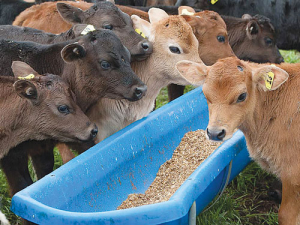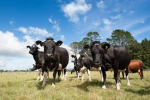Weaning based on calf weight and meal intake will help calves develop into healthy heifers, says DairyNZ.
Preparing a heifer well for weaning reduces the likelihood she will need preferential treatment post-weaning.
Preferentially managing small groups of animals to try to ‘catch them up’ to the group is time-consuming and can be difficult to manage, so it is best avoided by good and early management.
Factors to consider before weaning
Is the calf:
Consuming the desired amount of feed? Is its rumen sufficiently developed?
Meeting its weight-for-age target, based on its breed and/or the rearing system?
At the minimum age for the rearing system?
Able to compete within a group?
A calf’s rumen development is the key to deciding when to wean. The only way this can be assessed is by measuring the amount of concentrate or pasture they are readily eating, which should be at least 1kg/day of meal or 2kg/day of pasture.
Calves need clean water and feed for rumen development. Calf meal and high quality herbage together provide the energy, protein and volatile fatty acids necessary for rumen development and animal growth.
Grains have different fatty acid profiles and higher levels of butyrate which stimulates papillae growth; papillae increase the surface area of the rumen and aids in digestion.
Good quality hay can be used as a roughage if a grain-based meal is also being used, and should be offered from birth.
Calves given large quantities of milk will have slower rumen development because the milk satisfies their appetite so they eat less forage and concentrates, which decreases their need for digestion in the rumen.
Any change to the quantity or type of feed needs to be measured. Just as it takes time to develop the rumen, time is key in transitioning from calf meal to a full pasture diet.
Farmer experience indicates that a two-week gap between each diet change (e.g. weaning off milk with meal concentrate to full pasture diet) will help transition heifers to a full pasture diet.
New-born calves need a lot of dietary protein; the need diminishes as they age.
A higher crude protein intake should lead to higher growth rates. If using calf meal, look for products that contain 20% crude protein for calves on milk and 17% crude protein for weaned calves to meet total dietary requirements.
Relocating newly-weaned calves
Relocation can hinder growth checks or trigger animal health issues including pneumonia, scouring and parasites.
Recently weaned calves are at particular risk as they will be undergoing changes in diet and rumen development, and they will be moving from individual or small group care to larger mob management.
Relocation adds to the risk; the younger the animal, and the more recently they have been weaned, the higher the risk.


















